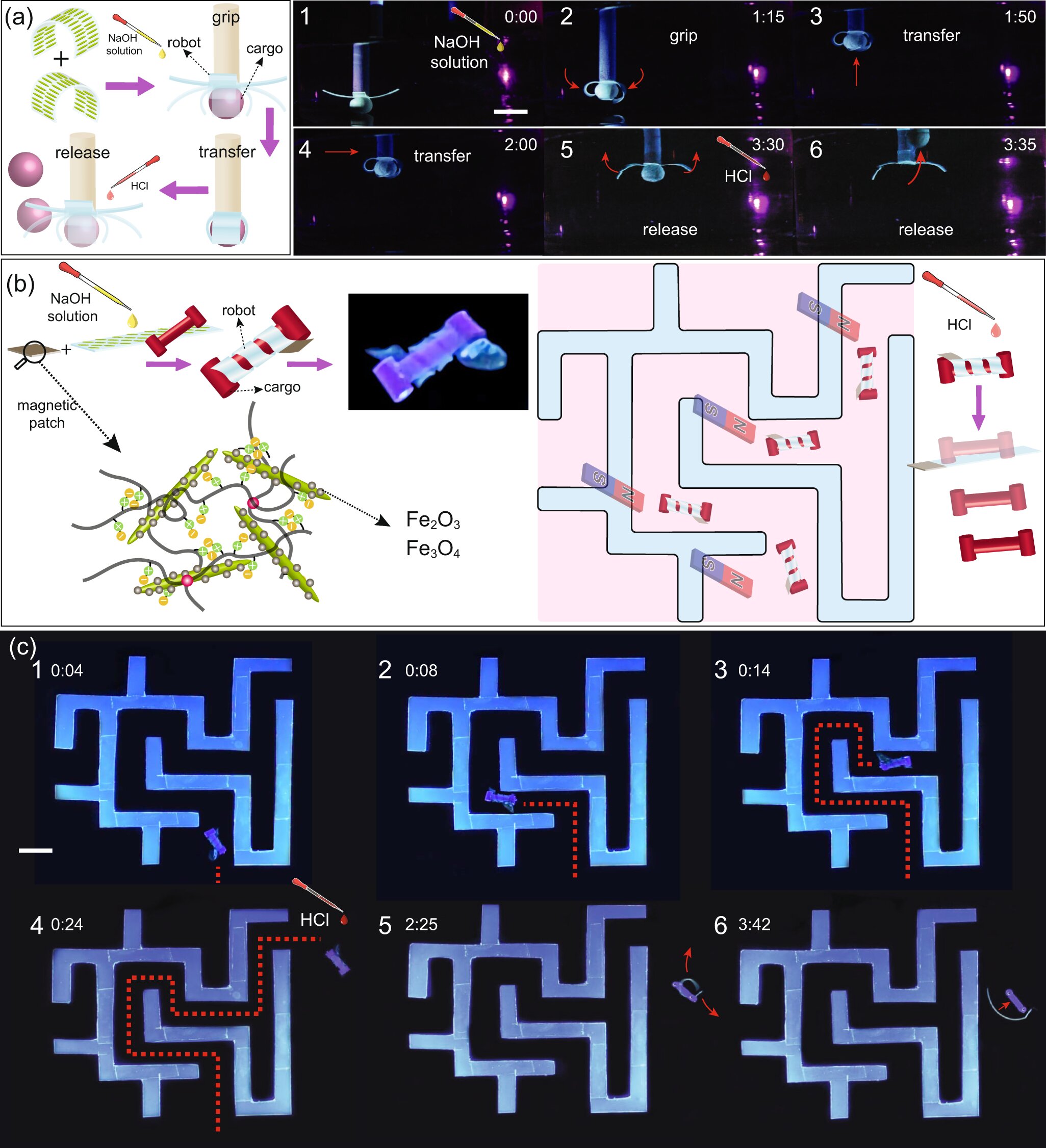A team of University of Waterloo researchers has created smart, advanced materials that will be the building blocks for a future generation of soft medical microrobots. They published their results in Nature Communications.
These tiny robots have the potential to conduct medical procedures, such as biopsy, and cell and tissue transport, in a minimally invasive fashion. They can move through confined and flooded environments, like the human body, and deliver delicate and light cargo, such as cells or tissues, to a target position.
The tiny soft robots are a maximum of one centimeter long and are bio-compatible and non-toxic. The robots are made of advanced hydrogel composites that include sustainable cellulose nanoparticles derived from plants.
This research, led by Hamed Shahsavan, a professor in the Department of Chemical Engineering, portrays a holistic approach to the design, synthesis, fabrication, and manipulation of microrobots. The hydrogel used in this work changes its shape when exposed to external chemical stimulation. The ability to orient cellulose nanoparticles at will enables researchers to program such shape-change, which is crucial for the fabrication of functional soft robots.
“In my research group, we are bridging the old and new,” said Shahsavan, director of the Smart Materials for Advanced Robotic Technologies (SMART-Lab). “We introduce emerging microrobots by leveraging traditional soft matter like hydrogels, liquid crystals, and colloids.”
The other unique component of this advanced smart material is that it is self-healing, which allows for programming a wide range in the shape of the robots. Researchers can cut the material and paste it back together without using glue or other adhesives to form different shapes for different procedures.
The material can be further modified with a magnetism that facilitates the movement of soft robots through the human body. As proof of concept of how the robot would maneuver through the body, the tiny robot was moved through a maze by researchers controlling its movement using a magnetic field.
“Chemical engineers play a critical role in pushing the frontiers of medical microrobotics research,” Shahsavan said. “Interestingly, tackling the many grand challenges in microrobotics requires the skillset and knowledge chemical engineers possess, including heat and mass transfer, fluid mechanics, reaction engineering, polymers, soft matter science, and biochemical systems. So, we are uniquely positioned to introduce innovative avenues in this emerging field.”
The next step in this research is to scale the robot down to submillimeter scales.
Shahsavan’s research group collaborated with Waterloo’s Tizazu Mekonnen, a professor from the Department of Chemical Engineering, Professor Shirley Tang, Associate Dean of Science (Research), and Amirreza Aghakhani, a professor from the University of Stuttgart in Germany.
More information:
Rasool Nasseri et al, Programmable nanocomposites of cellulose nanocrystals and zwitterionic hydrogels for soft robotics, Nature Communications (2023). DOI: 10.1038/s41467-023-41874-7
Citation:
Scientists demonstrate the transport of light cargo using tethered and untethered soft robots made from hydrogels (2023, October 23)
retrieved 23 October 2023
from https://phys.org/news/2023-10-scientists-cargo-tethered-untethered-soft.html
This document is subject to copyright. Apart from any fair dealing for the purpose of private study or research, no
part may be reproduced without the written permission. The content is provided for information purposes only.
Denial of responsibility! TechCodex is an automatic aggregator of the all world’s media. In each content, the hyperlink to the primary source is specified. All trademarks belong to their rightful owners, and all materials to their authors. For any complaint, please reach us at – [email protected]. We will take necessary action within 24 hours.

Jessica Irvine is a tech enthusiast specializing in gadgets. From smart home devices to cutting-edge electronics, Jessica explores the world of consumer tech, offering readers comprehensive reviews, hands-on experiences, and expert insights into the coolest and most innovative gadgets on the market.


